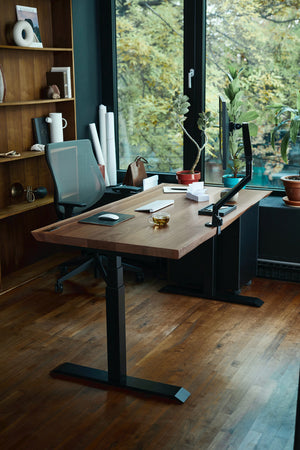Choosing the right office chair is only a small part in ensuring the best working conditions for a desk job. The important part is how we use the chair.
-
Adjust your chair height: Ensure your feet are flat on the ground or use a footrest if needed. Your knees should be at or slightly lower than hip level. This helps reduce pressure on the back of your thighs and promotes blood flow.
-
Support your lower back: Use a chair with good lumbar support, or use a cushion to maintain the natural curve of your lower back.
-
Position your elbows at a 90-100 degree angle: Adjust the armrests or your chair height so your shoulders are relaxed and your elbows form a 90-100 degree angle while typing or using the mouse.
-
Keep your wrists straight: Avoid bending your wrists upwards, downwards, or to the sides. Use a wrist rest or adjust the keyboard height to maintain a neutral wrist position.
-
Minimize reaching: Position the items you use most within your forearms distance from the edge of the desk. Keep your upper arms as close to your body as possible
-
Set your monitor at eye level: Position your monitor approximately an arm's length away and at eye level, so you don't need to tilt your head up or down to see the screen clearly.
-
Take breaks and stand up: Sitting for extended periods is not healthy. Stand up, stretch, and walk around every 30-60 minutes to promote blood circulation and reduce muscle strain.
We hope these few tips can help you or at least inspire you to reseqarch the subject more. For further information, please refer to the following sources:
- Mayo Clinic - Office ergonomics: https://www.mayoclinic.org/healthy-lifestyle/adult-health/in-depth/office-ergonomics/art-20046169
- OSHA - Ergonomics: https://www.osha.gov/ergonomics

